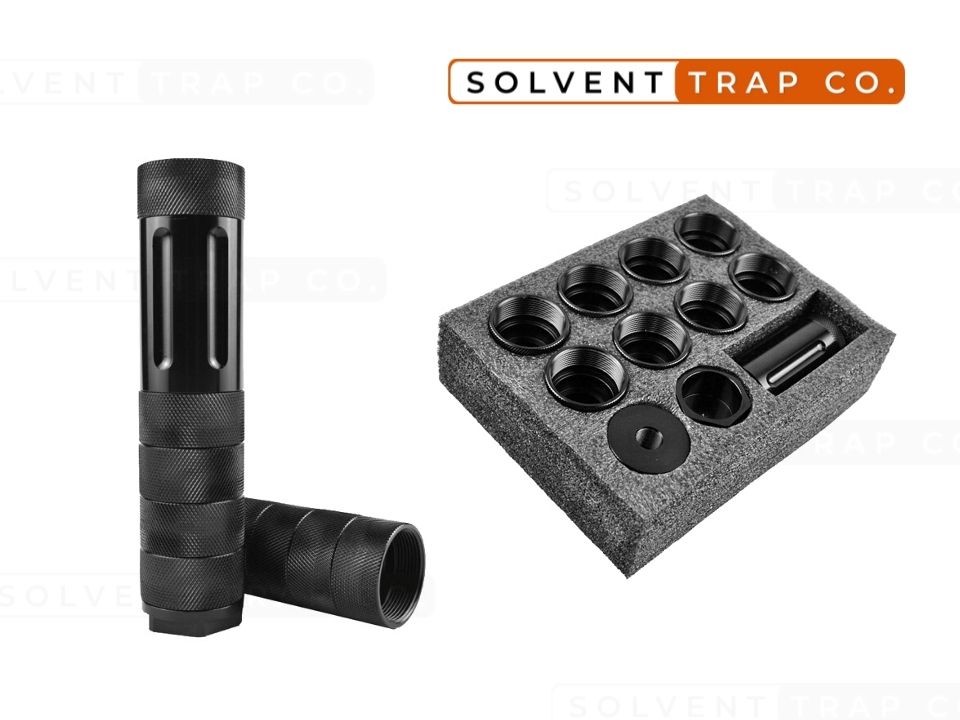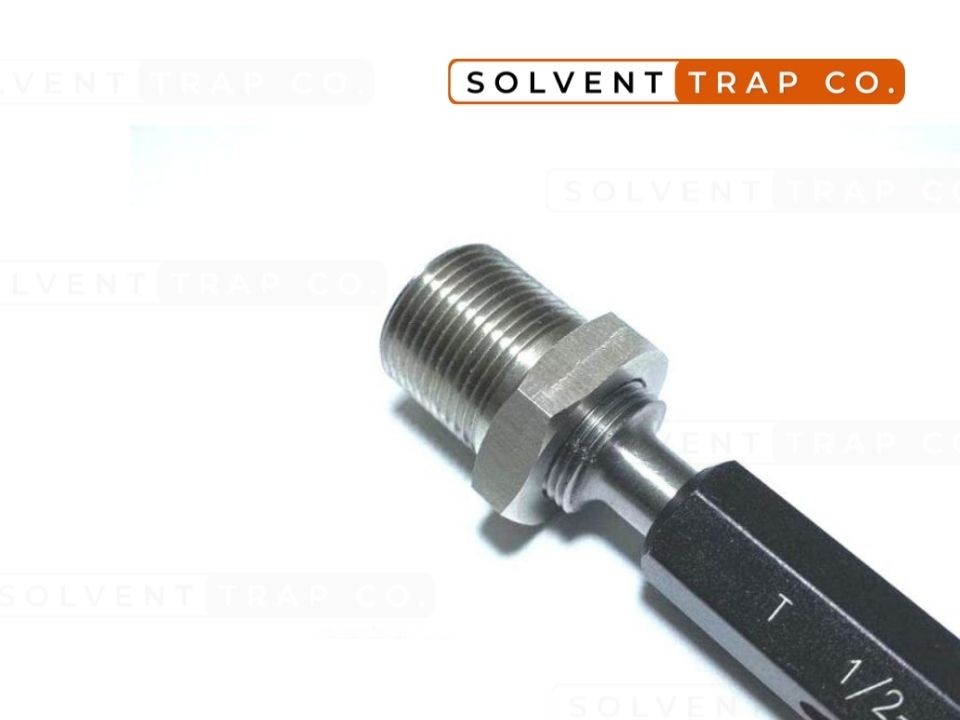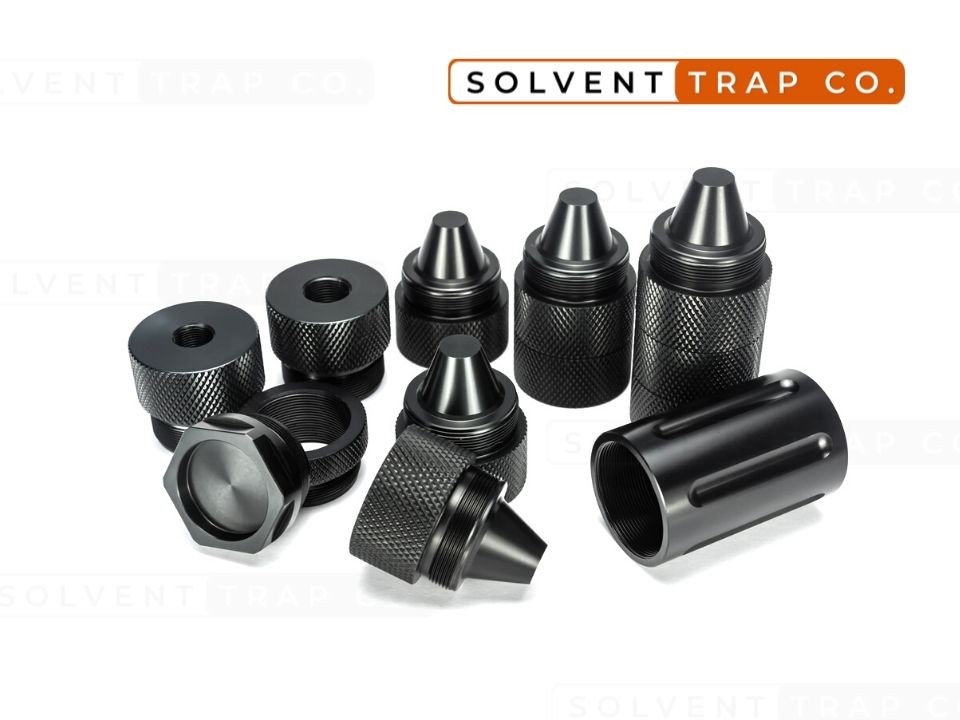7 Things You Need To Know About Solvent Traps in 2022
Experienced owners may already be aware of the dangers of neglecting the proper maintenance of firearms. This is where a solvent trap comes in. It’s a firearm cleaning accessory that you can attach to the end of your barrel with an adapter to ensure all the cleaning solvents are kept in, all through the process. A solvent trap collects the fluids for easy disposal or reuse and prevents harmful chemicals from directly contacting the skin.
What is a solvent trap?
A solvent trap is one of the most crucial tools for firearm maintenance. The cleaning tool is designed to look like a receiving tube attached to the end of your firearm’s barrel to capture cleaning solvent. Some are made of titanium and aluminum, and others are steel. But regardless of the build material, the functions remain the same.
A solvent trap comes in different designs. If you have come across a few models, one specific thing you would realize is that most of them are made with end caps to fit various sizes, especially the 1/2 x 28 or other standard pitches.
Why are solvent traps needed when cleaning your firearms?
Although using a solvent trap is not new to most firearm owners, you may be wondering why this equipment is so vital to cleaning. The truth is that your firearm may look clean on the outside, but if the inside is not equally clean, you may be dealing with a ticking time bomb. It’s essential to perform regular care procedures with a solvent trap to clean the entire firearm. This helps to avoid damage, malfunction, and other dangers.
Parts and functions of a solvent trap
When you get your solvent trap kit, it comes with essential parts that require some assembling. They include:
Solvent trap cups:
These come in various numbers depending on the model. It functions as a storage to keep fluid or other items. Some snap together, while others are threaded to keep it sealed.
Solvent trap tube:
The tube can be titanium or aluminum that holds the cups together.
Endcap adapter:
It keeps the fluids from dripping back into the barrel.
How a solvent trap helps to prevent potential damages and malfunctions?
It’s easy to blame your manufacturer for every firearm fail. But since most rifles are built with heavy-duty materials to ensure they last, it’s possible that some unusual negligence is the reason why your gear is not functioning correctly. Basic maintenance using your solvent trap can help to prevent potential damages and malfunctions.
These are the causes of residue build up in your firearm:
Fouling:
When the bullet moves through the barrel, it can sometimes leave lead metal traces inside it. Without frequent maintenance, these leftovers can accumulate and cause rusting and erosion. Issues like this affect your weapon’s reliability.
Squib load or slamfire:
When a round doesn’t have enough force, it causes an incomplete discharge. Delayed discharge or premature discharge is not good either. With the bullet lodging in the barrel after firing, the propellant ignition triggering an action lag or burst while still loading the chamber, it can result in residue build-up and may even explode.
Feed and eject failure:
When your firearm is not maintained correctly, around may not feed into the chamber after, or the ejection point may fail to clear. These are serious issues and more reasons why you have to clean your device regularly and adequately with a solvent trap.
What items do you need to clean your firearm?
It’s better to set a regular schedule for your firearm cleaning. You need to prepare a place with enough space and prepare the following items for this task.
- Solvent trap
- Cleaning rod
- Reel cloth
- Caliber specific bore brush
- Utility brush
- Cleaning swab
- Cleaning solvents and lubricants]
- Bore rod
- Disposable bin or drip pan (just in case)
What to know about the legalities of solvent traps?
As solvent traps become more popular equipment in the firearm community, some questions are being asked about their legalities. The fundamental connection between solvent traps and firearms is that it makes way for a safer cleaning process without having to worry about messing up the environment. So to be safe, a solvent trap’s sole purpose is just for cleaning.
Solvent traps are not illegal in the United States, and you can purchase them in any state.
Buying a solvent trap from a foreign company a good idea?
If you are shopping on the internet, it’s normal to come across a few cheap foreign models of solvent traps. Even though these kits are most likely substandard, you have to comply with the firearm regulations of the state you reside in and avoid illegal solvent traps. Some restrictions you have to be aware of includes:
- Purchasing and having a solvent trap is legal, but altering, drilling through, modifying, or redesigning the accessory without an approved Form 1 form is illegal.
- Repairing your solvent trap is also not allowed. If it has damaged components, you should instead contact the manufacturers.
- The sole purpose of a solvent trap is to clean your firearm or store solvent. Using an illegal product or other products that may look similar to a solvent trap can lead to a felony charge.
Solvent traps can be purchased overseas, but we discourage buying from these Chinese solvent trap manufacturers. Besides considering the prices and quality of solvent traps, it’s proper to deal cautiously and ensure to buy yours from well-known sources.
It helps to know the guiding laws behind purchasing or using a solvent trap. As long as you’re following the correct regulations, a solvent trap is legal to have and use without any documentation.





Leave a Reply